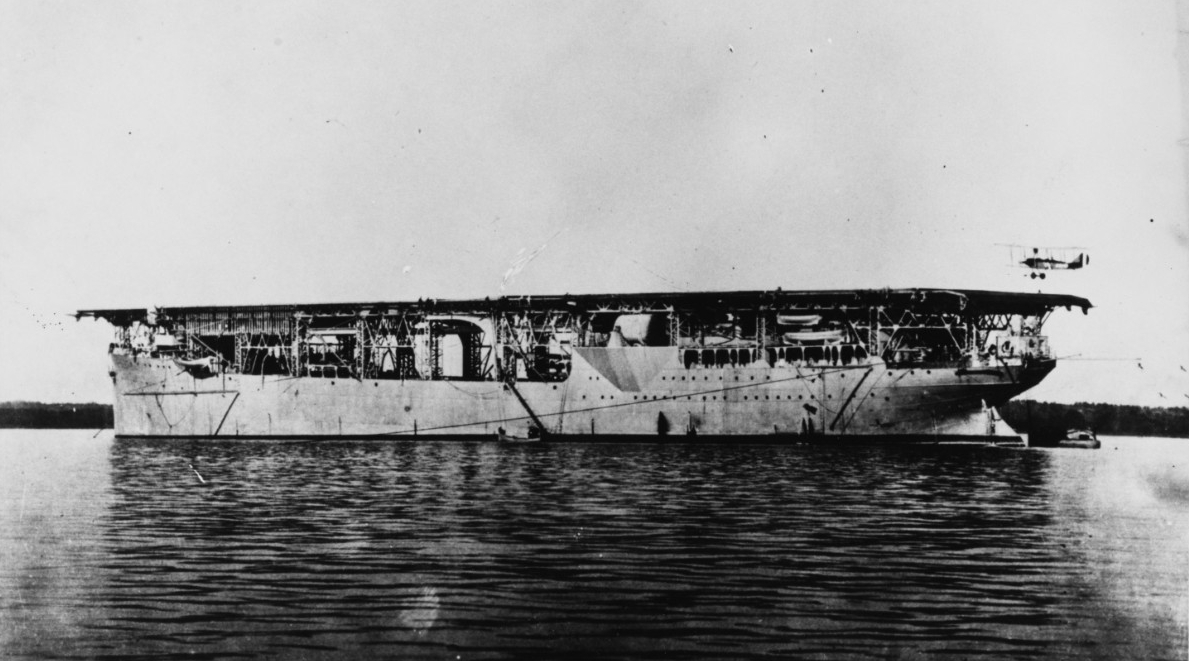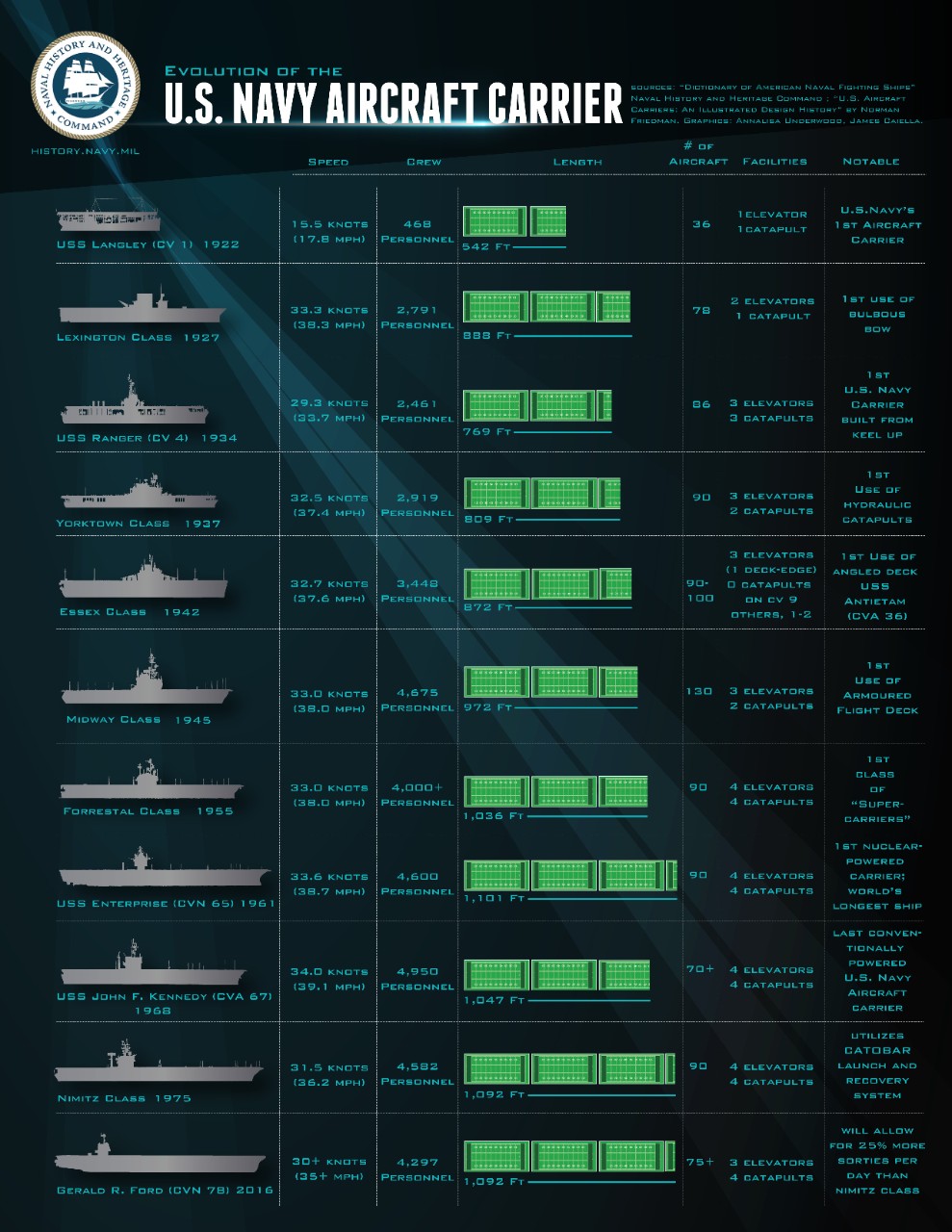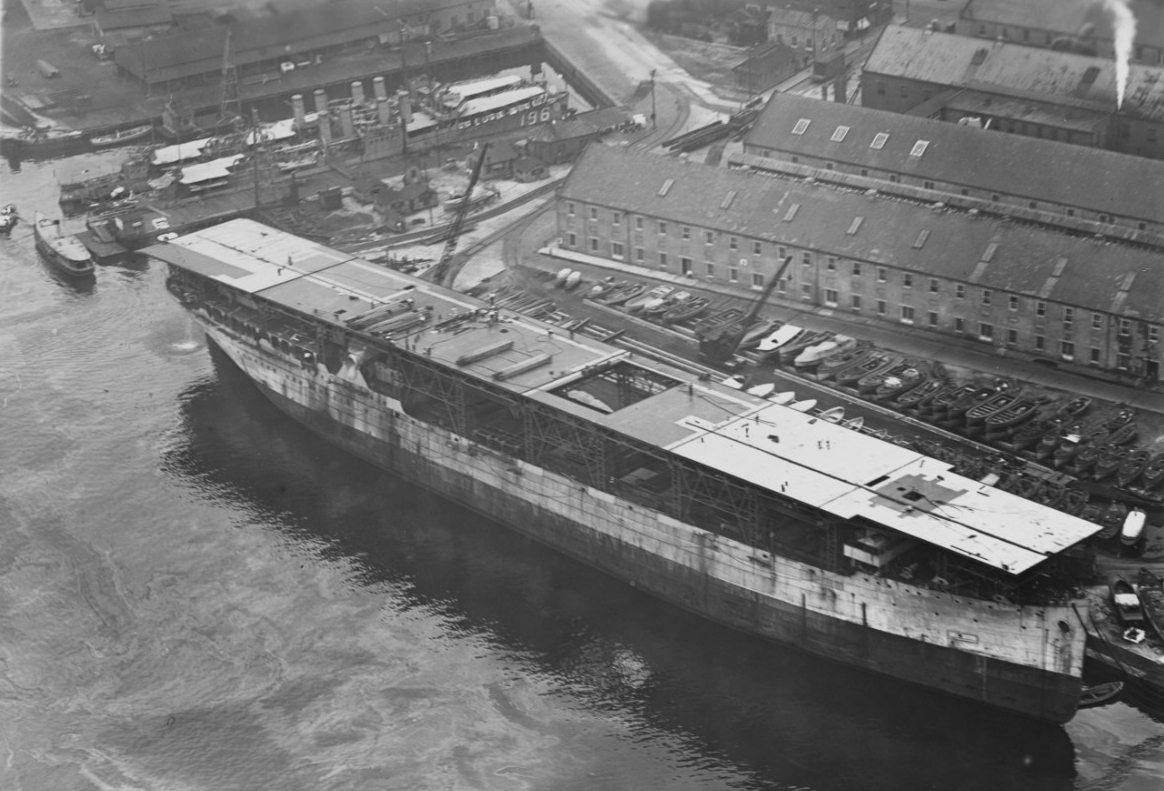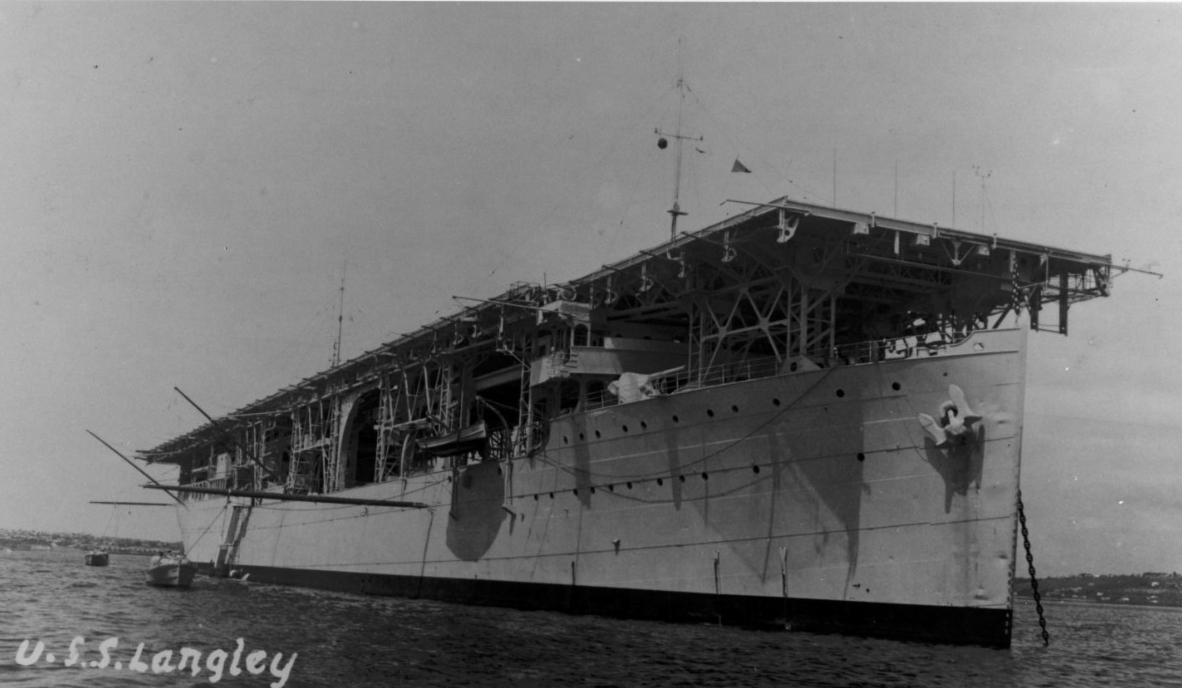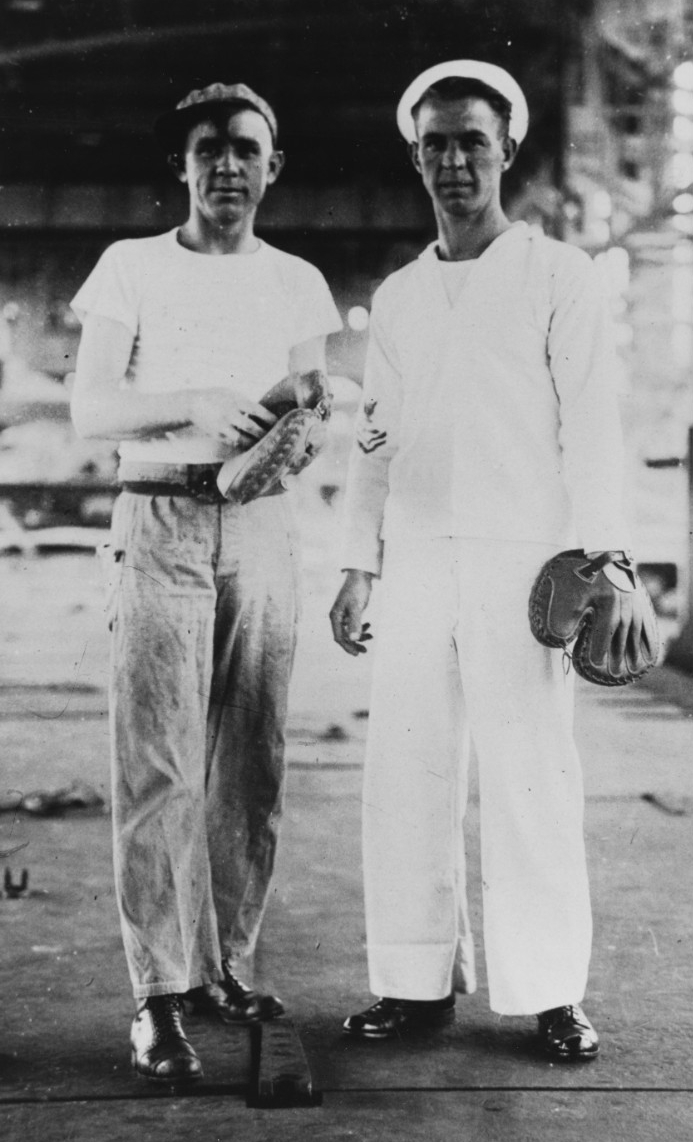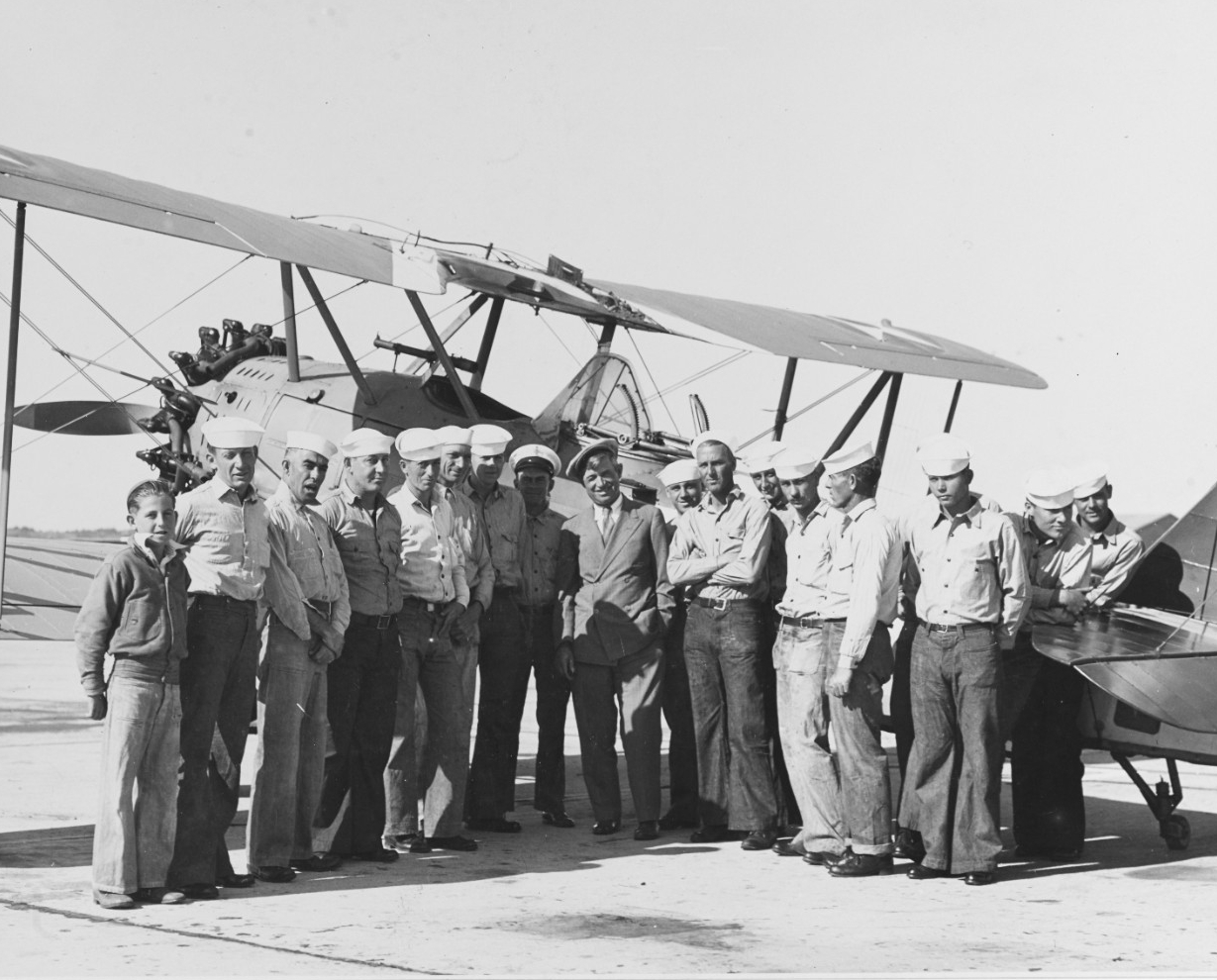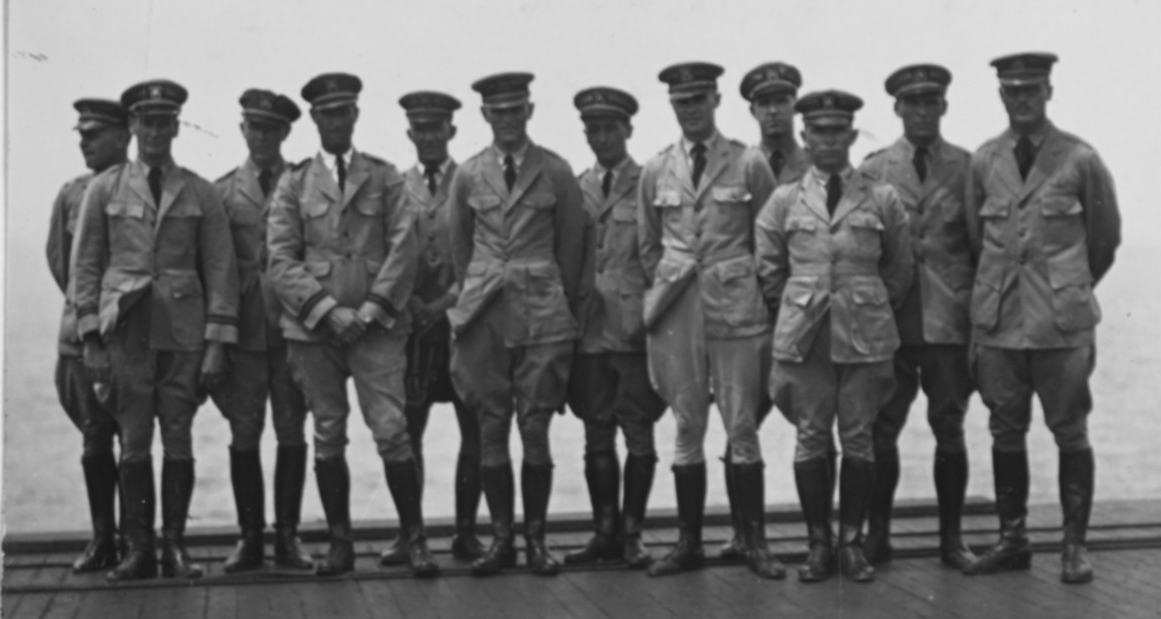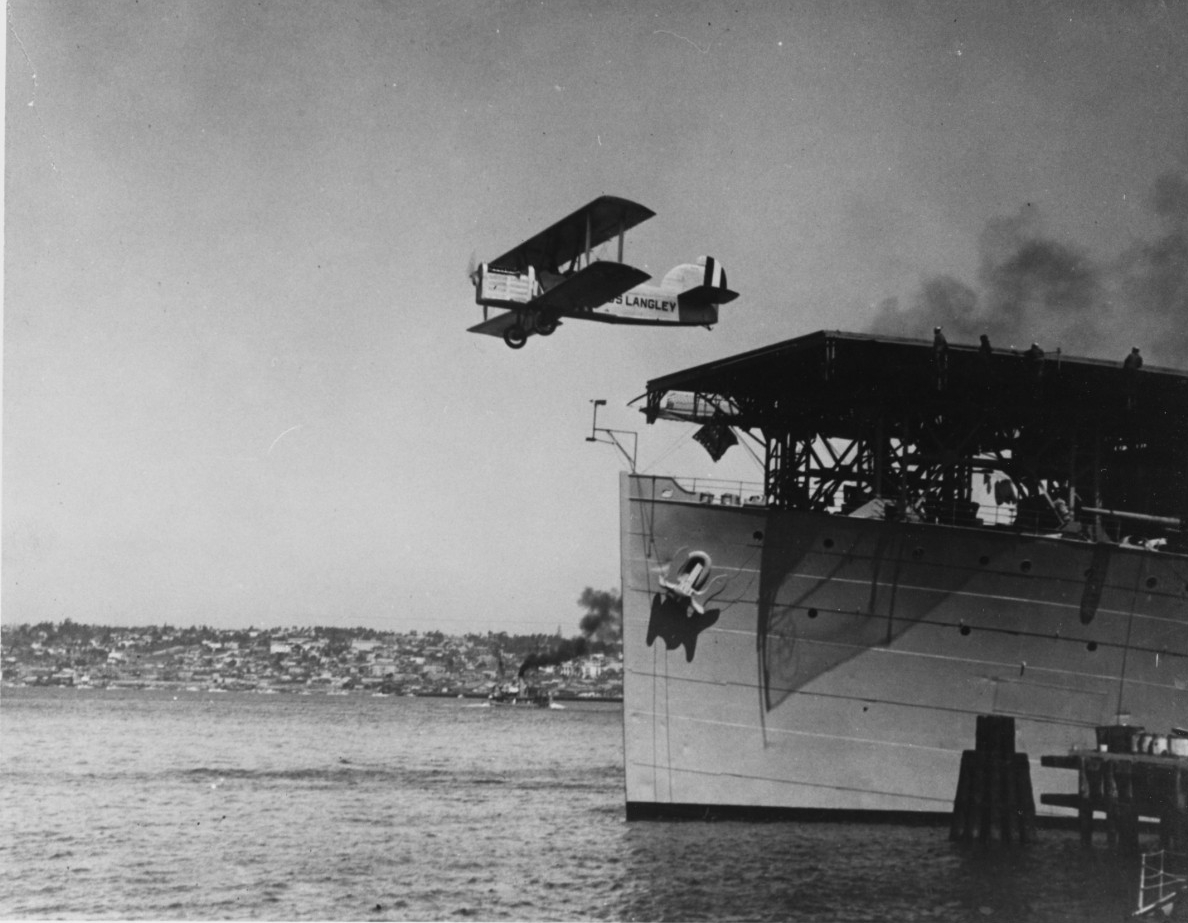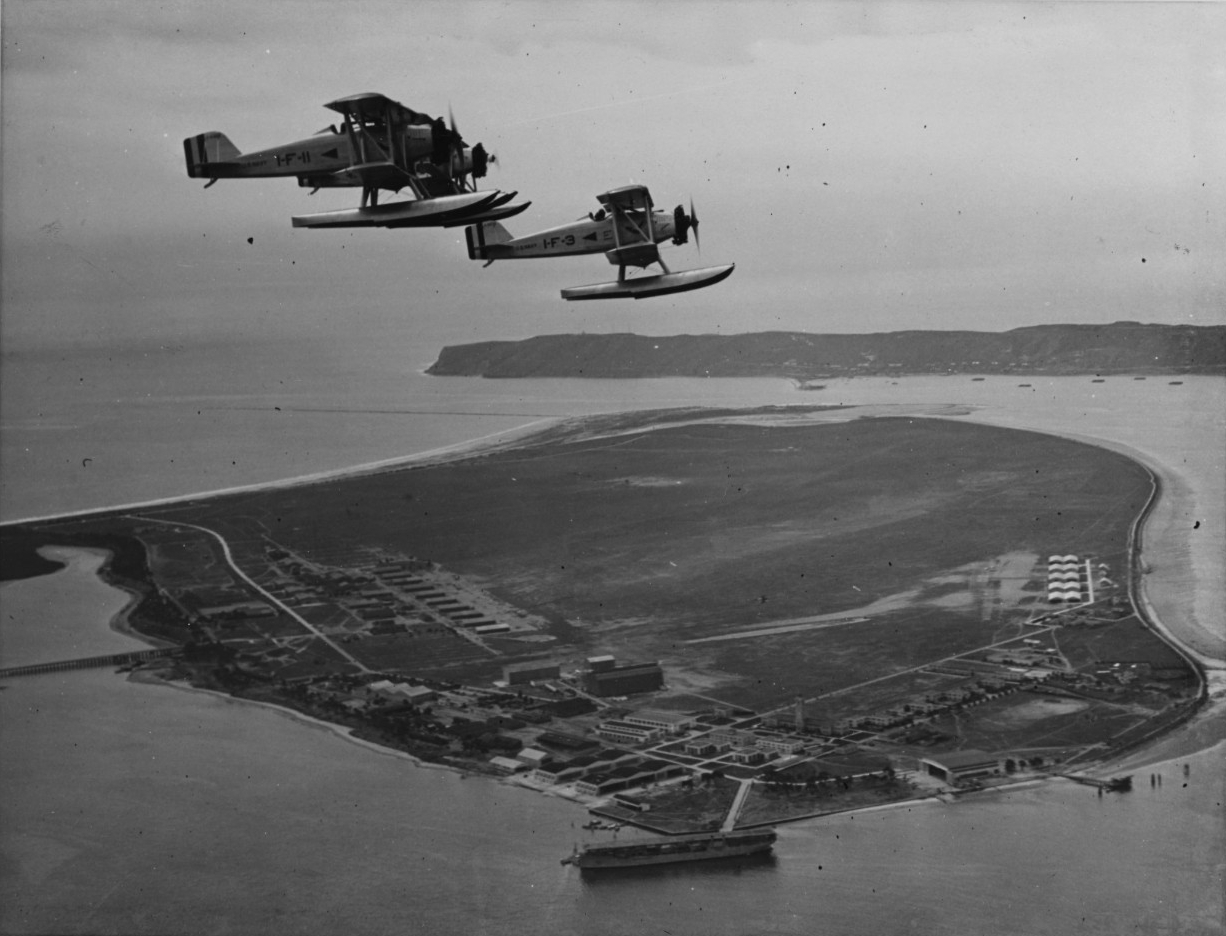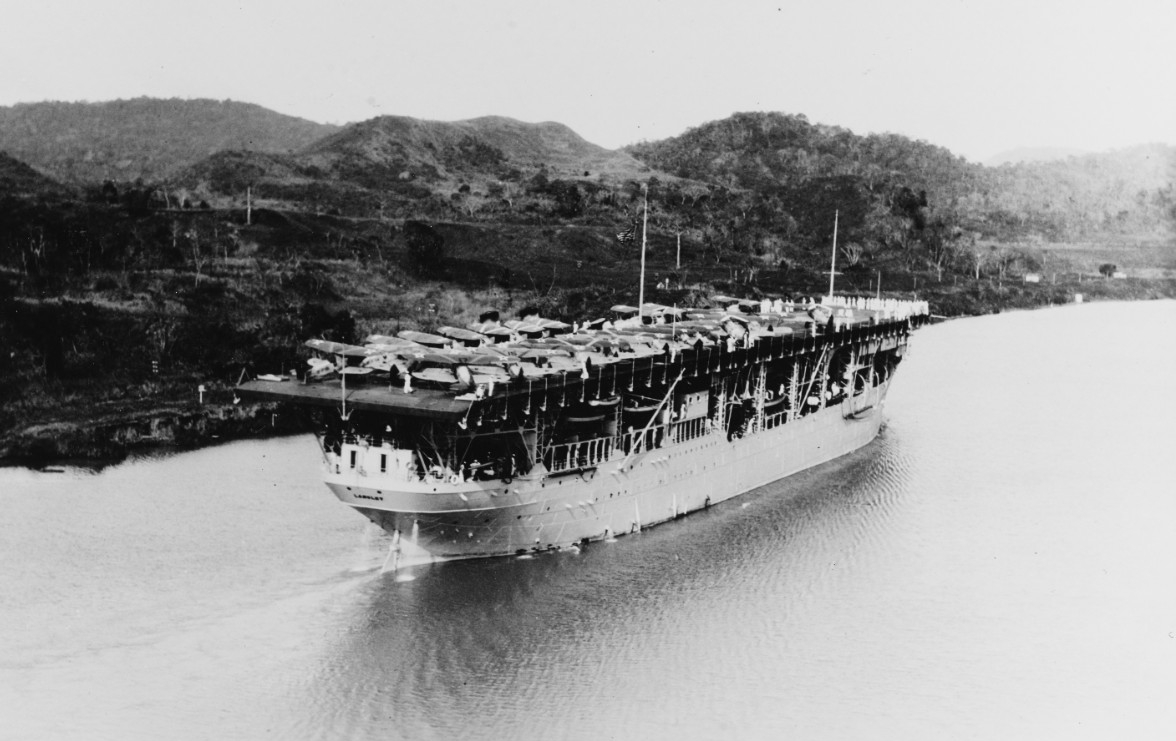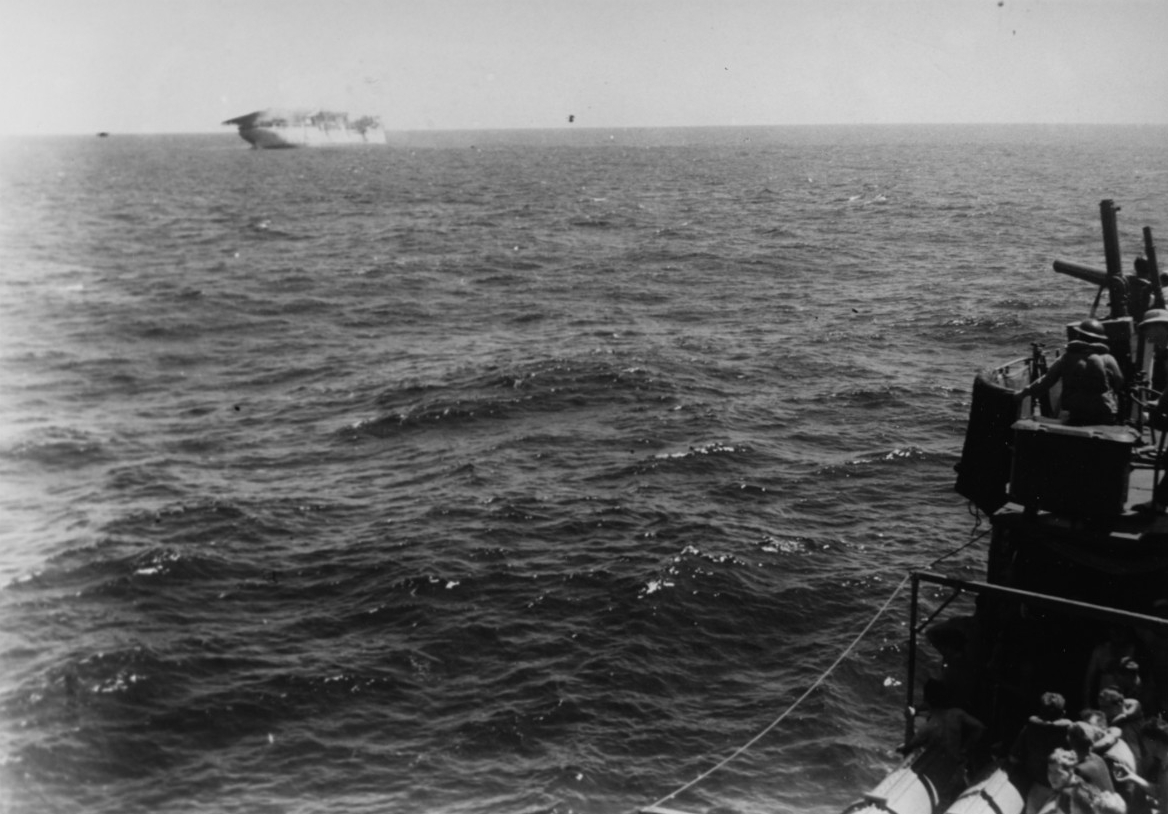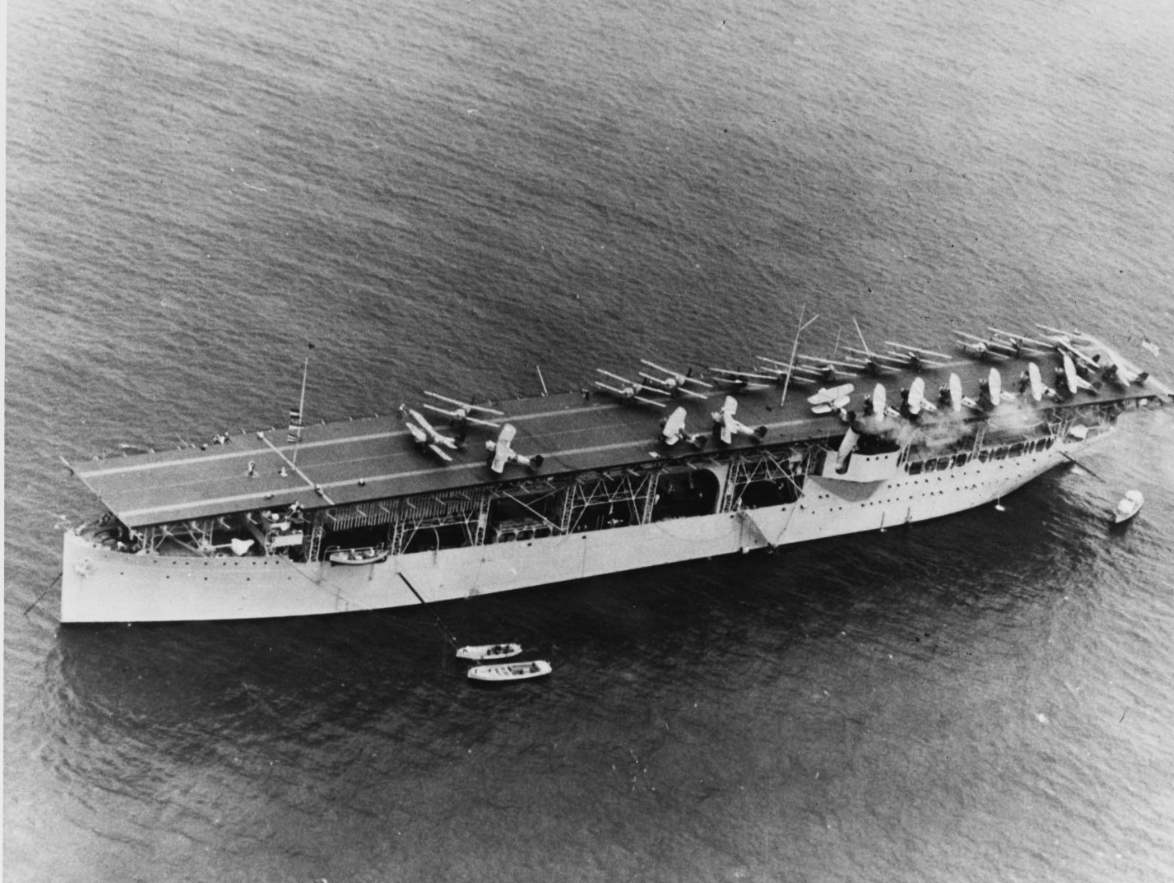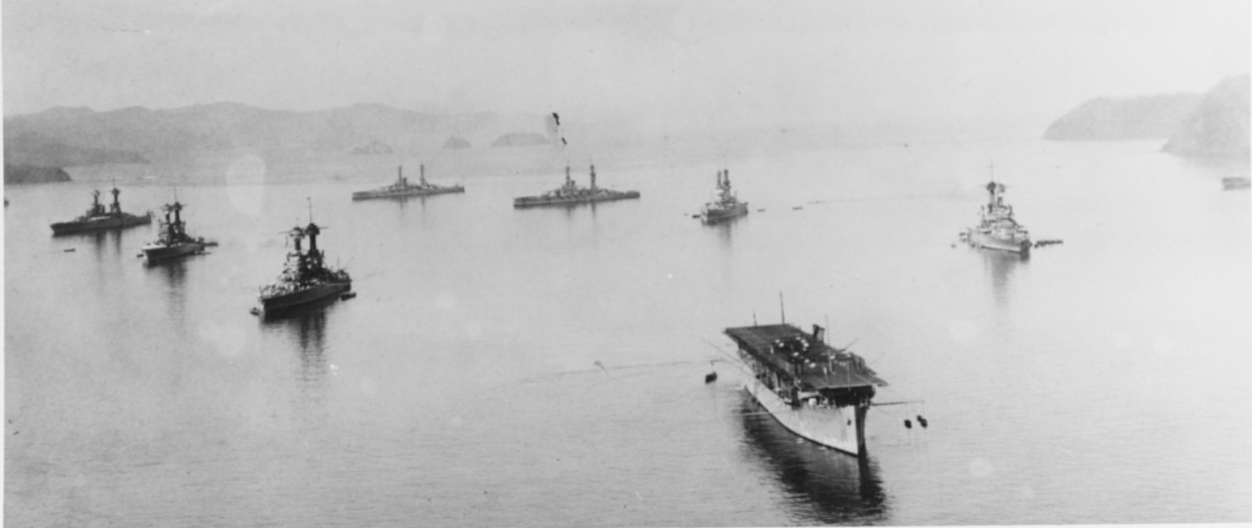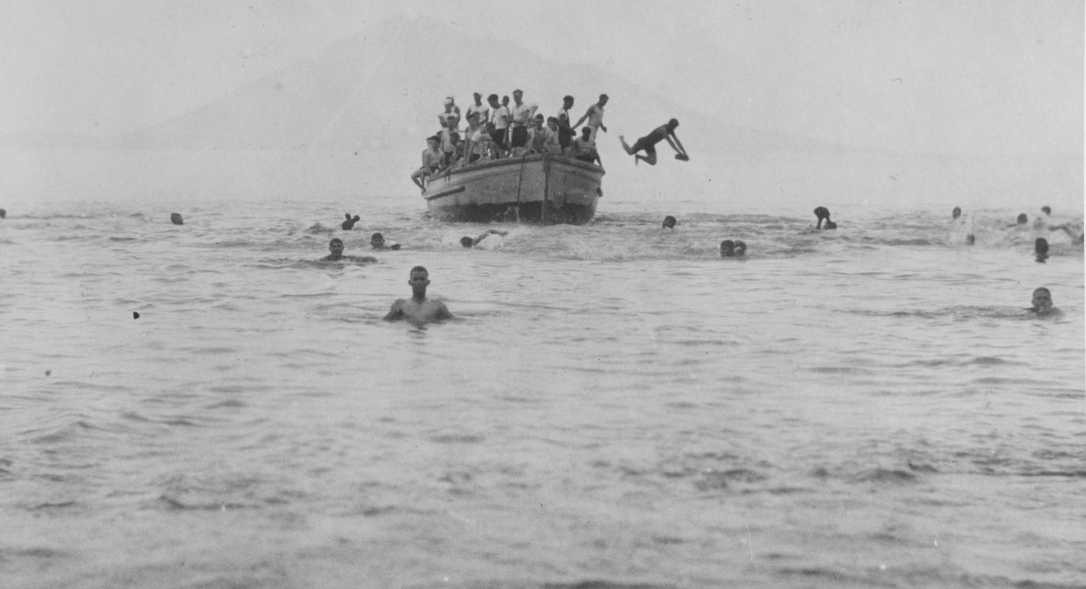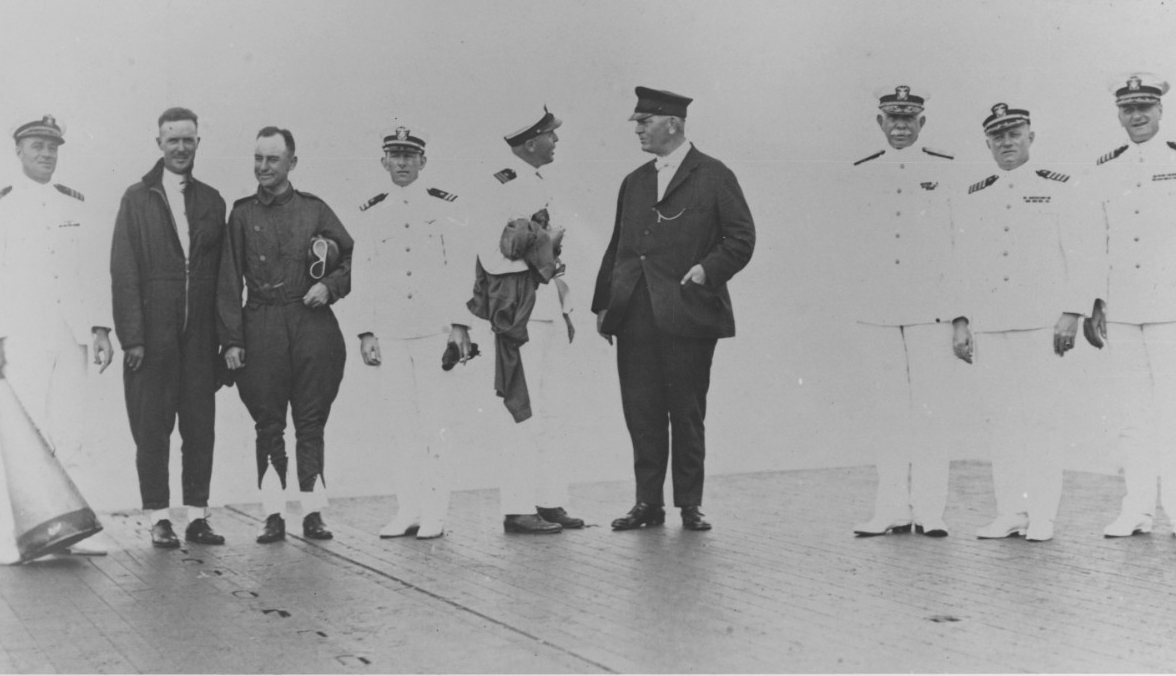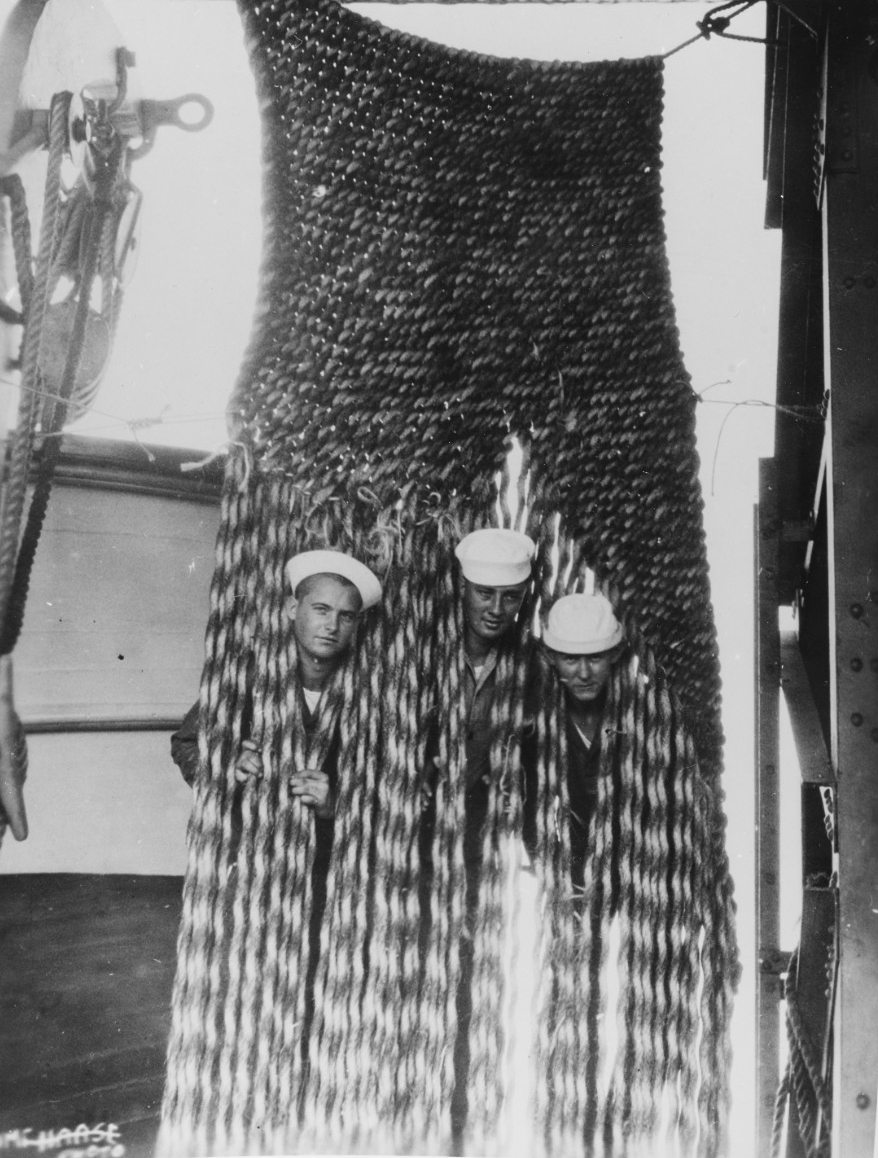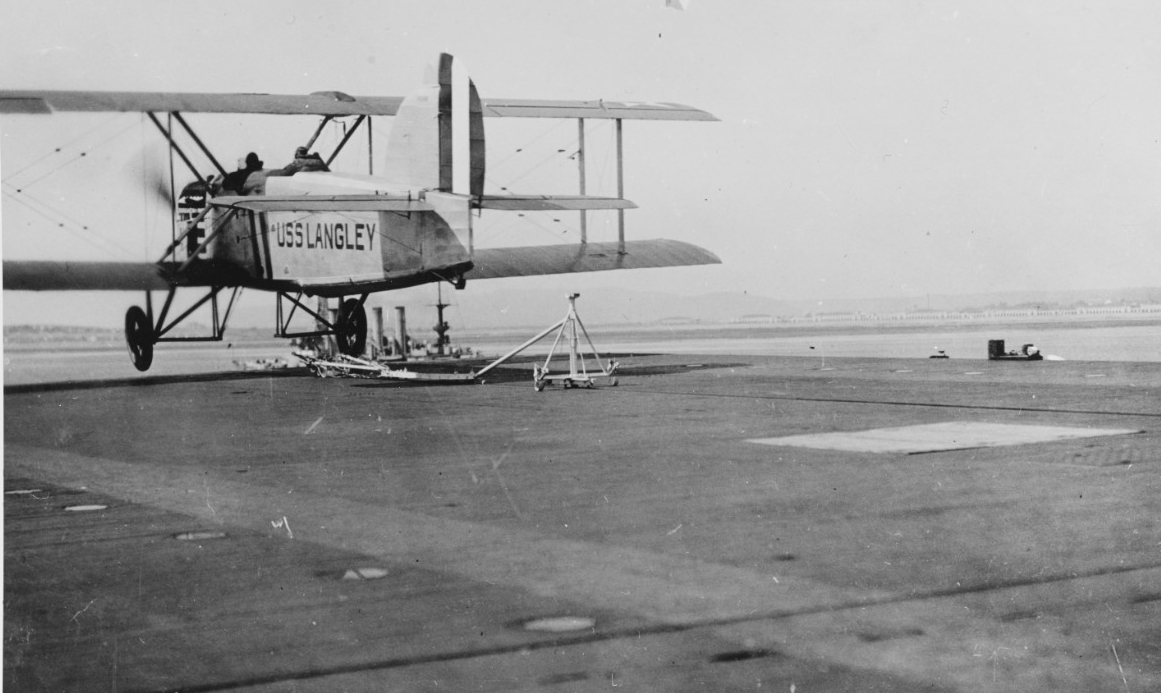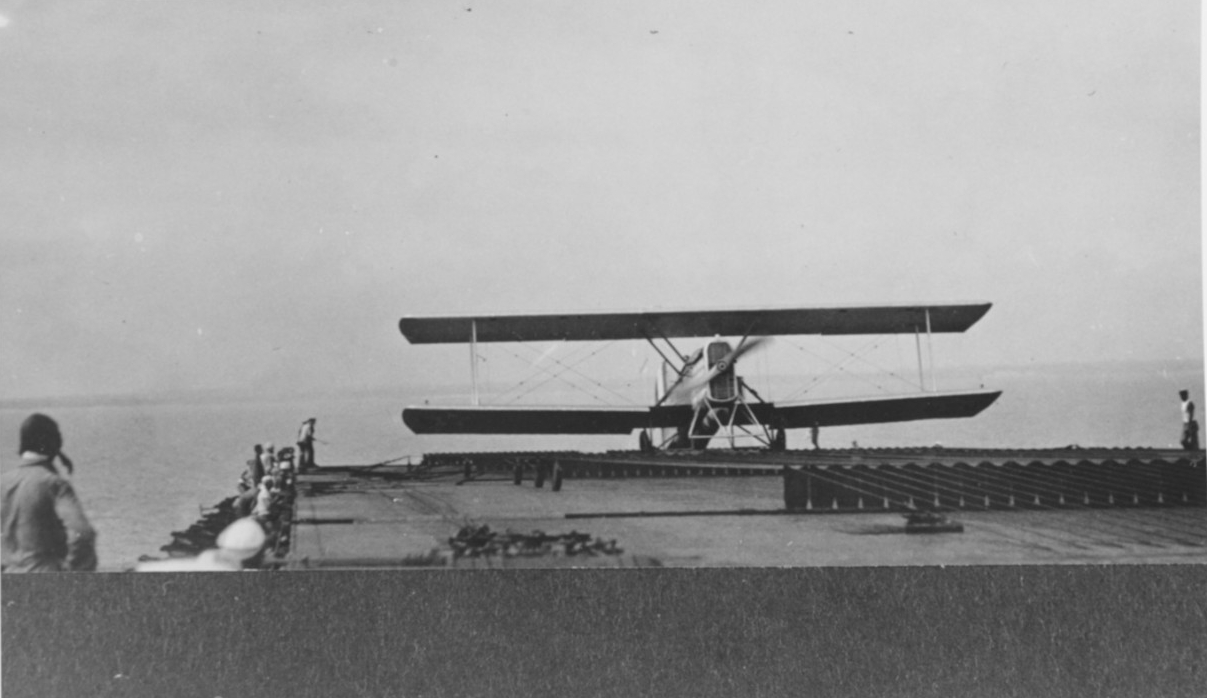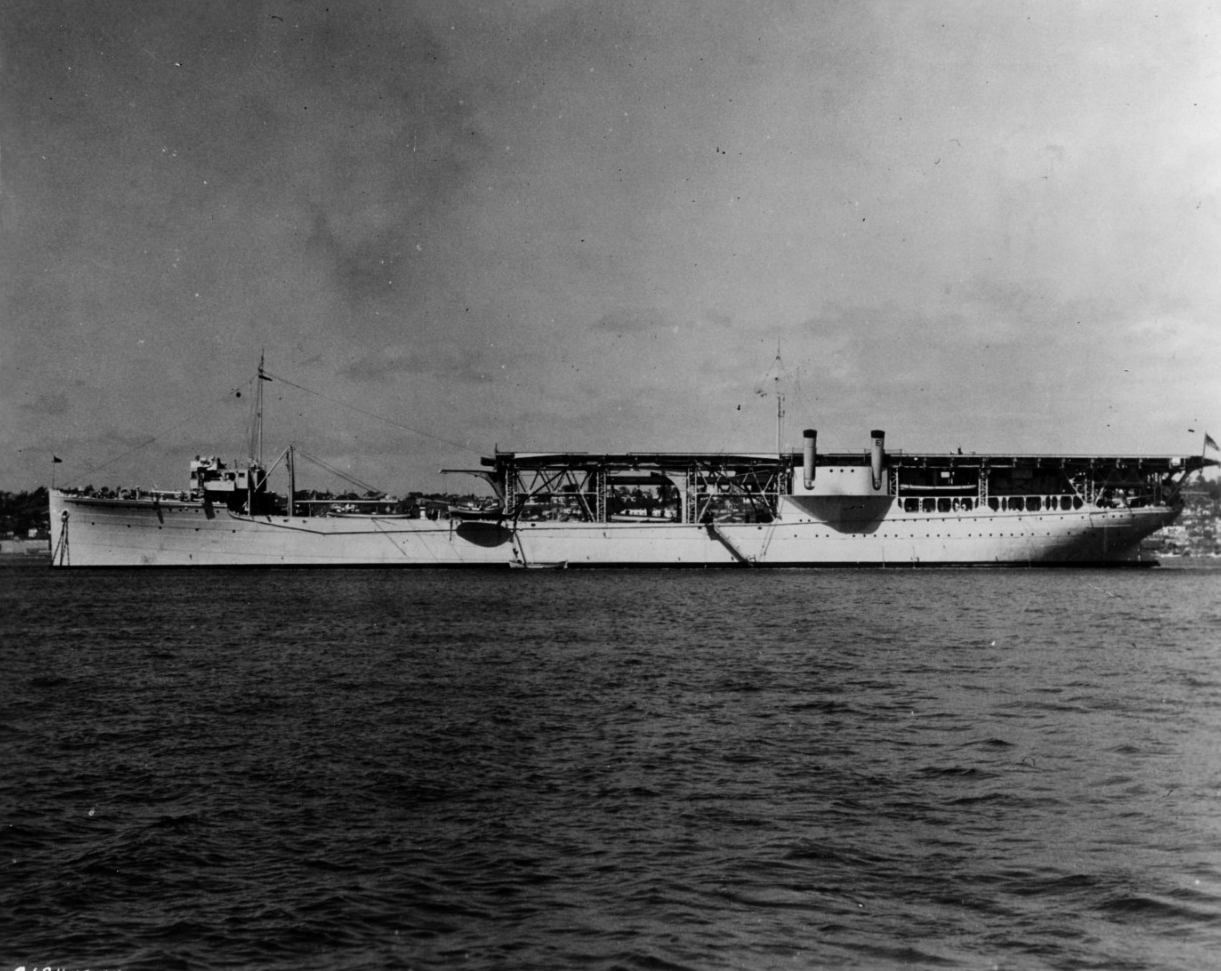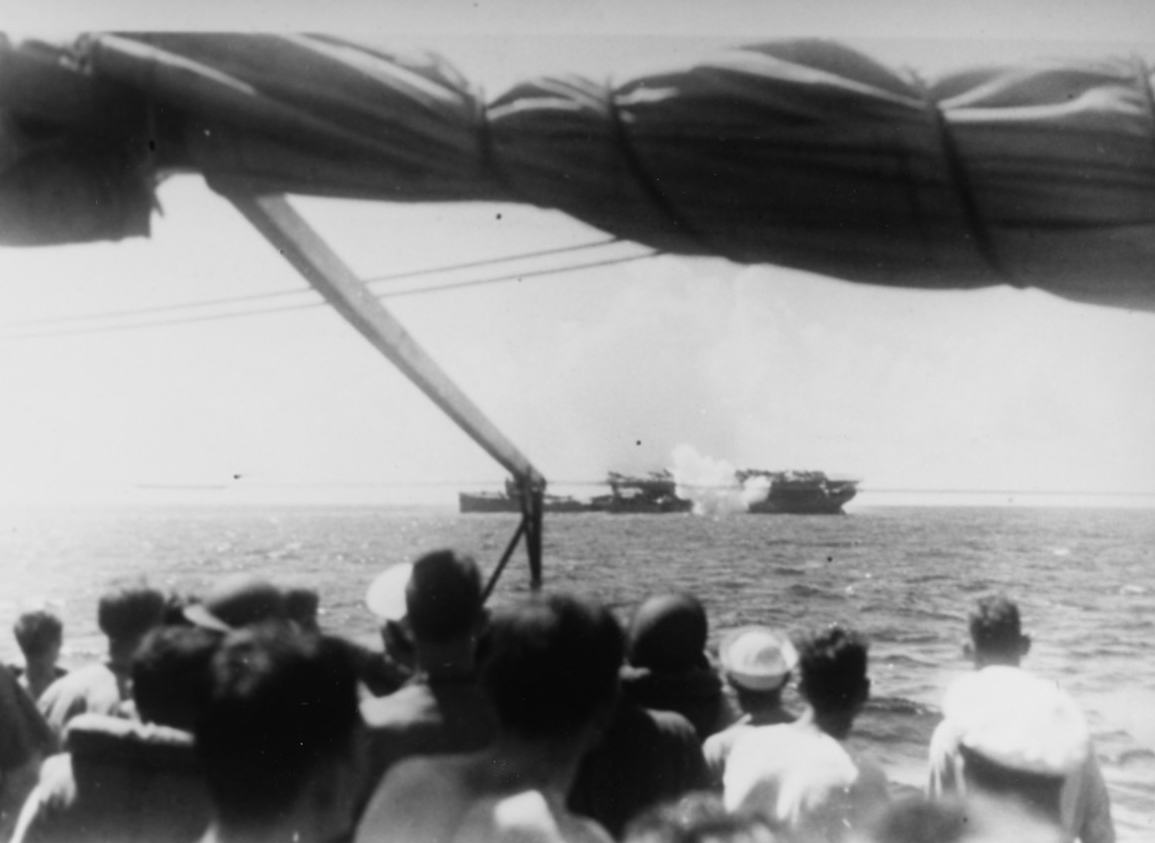USS Langley (CV-1)
Developed from the Proteus-class collier Jupiter, USS Langley (CV-1) was converted into America’s first aircraft carrier and was recommissioned on 20 March 1922 with Commander Kenneth Whiting as her first commander. The ship was named to honor Samuel P. Langley, who was a former assistant professor at the U.S. Naval Academy and later secretary of the Smithsonian Institute. Langley’s repeated attempts to launch and land aircraft from ships at sea inspired the Navy, after his death in 1906, to carry on his legacy. Jupiter was ideal for conversion, because it had large holds that were transformed into hangars. As the first U.S. Navy carrier, Langley hosted numerous momentous events following her recommission. On 17 October 1922, Lieutenant Virgil C. Griffin made the Navy’s first carrier takeoff when he flew a Vought VE-7-SF from Langley’s decks while the ship was anchored in York River, Virginia. Nine days later, while Langley was underway, Lieutenant Commander Godfrey D. Chevalier completed the first landing on an aircraft carrier in an Aeromarine 39-B plane, and on 18 November, Whiting became the first aviator to be catapulted from the carrier's deck.
Langley served as an unarmed test bed for deck and flight operations throughout the 1920s. During this time, the Navy learned from its experiences on Langley how better to park and launch aircraft more quickly. The experiences that took place onboard Langley set the state for the fleet aircraft carriers that followed, such as Ranger, Lexington, and Saratoga, which were all built with flight decks that were wider, longer, and sturdier. The future carriers were built, based on lessons learned onboard Langley.
For the first half of 1923, Langley conducted flight operations and tests in the Caribbean. Later that year, she steamed to Washington, DC, for a demonstration at a flying exhibition before civil and military dignitaries. After demonstrating the Navy’s new capabilities, Langley steamed south arriving at Norfolk on 13 June, where she conducted training along the Atlantic coast and in the Caribbean through the end of the year. In 1924, Langley participated in more maneuvers and exhibitions, then spent the summer at Norfolk for repairs and alterations. She departed for the U.S. west coast later that year arriving in San Diego, California, on 29 November to join the Pacific Battle Fleet. For the next 12 years, Langley operated in California and Hawaiian waters where she engaged in training fleet units, experimentation, pilot training, and tactical fleet problems.
With the advent of new, improved carriers being built, Langley was put into Mare Island Navy Yard on 25 October 1936 for overhaul and conversion to a seaplane tender. Langley completed conversion on 26 February 1937 and was reclassified AV‑3 later that year. She was assigned to the Aircraft Scouting Force and commenced operations out of Seattle, Sitka, Pearl Harbor, and San Diego. She departed for a brief deployment with the Atlantic Fleet from 1 February to 10 July 1939, and then steamed to assume duties with the Asiatic Fleet at Manila arriving on 24 September.
At the onset of World War II, Langley was off Cavite in the Philippine Islands. The day after the Pearl Harbor attack, she proceeded to Balikpapan, Borneo, and Darwin, Australia, arriving on New Year’s Day 1942. Until 11 January, Langley assisted the Royal Australian Air Force running antisubmarine patrols out of Darwin. She was then assigned to American‑British‑Dutch‑Australian forces assembling in Indonesia to challenge the Japanese thrust in that direction. She departed Freemantle, Australia, on 22 February in a convoy, but left the convoy five days later to deliver 32 P‑40 fighters to the 13th Pursuit Squadron in Tjilatjap, Java.
Early in the morning on 27 February, Langley rendezvoused with her antisubmarine screen—destroyers Whipple (DD‑217) and Edsall (DD‑219). Shortly before noon, nine Japanese dive bombers attacked Langley. The first and second Japanese strikes were unsuccessful, however, during the third strike, Langley took five hits. Aircraft topside burst into flames, steering was impaired, and the ship took a 10 degree list to port. Unable to negotiate the narrow mouth of Tjilatjap Harbor, Langley was dead in the water. Her main engine room was flooded. At approximately 1330, the order to “abandon ship” was given by Commander R.P. McConnell. Langley’s crew then watched from the decks of Whipple and Edsall as the destroyers fired nine 4-inch shells and two torpedoes in the bowels of Langley, so the aircraft carrier wouldn’t fall into the hands of the enemy. Langley slipped below the waves about 75 miles south of Tjilatjap. Sixteen crewmembers were lost.
*****
Suggested Reading
- Naval Aviation
- Surface Navy
- Battles of Java Sea and Sunda Strait
- H-Gram 003-3: The Valor of the Asiatic Fleet
- H-Gram 005-2: Carrier versus Carrier (us versus them)
Video Footage
- Carrier Landings & Take Offs, USS Langley (CV-1), May 1925
- Flight Operations, USS Langley (CV-1), early 1920s
- The Attack Carrier: From USS Langley (CV-1) to USS Enterprise (CVAN-65)
Infographic
Selected Imagery
Photograph, taken circa 1923, shows officers and aviators on deck Langley (CV-1). Of note, Commander Kenneth Whiting, Langley’s first commander, is pictured on the left and Secretary of the Navy Edwin Denby is in the center in civilian clothes. Naval History and Heritage Command photograph, NH 80471.

